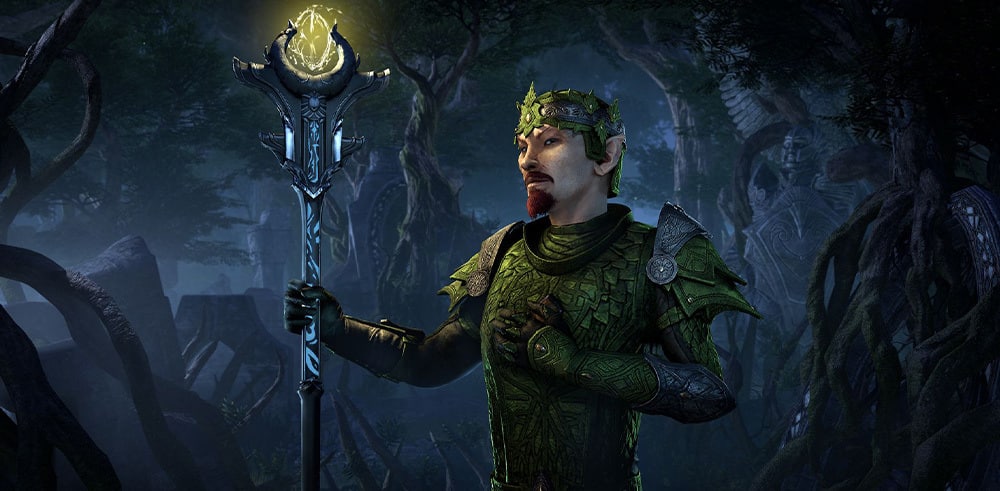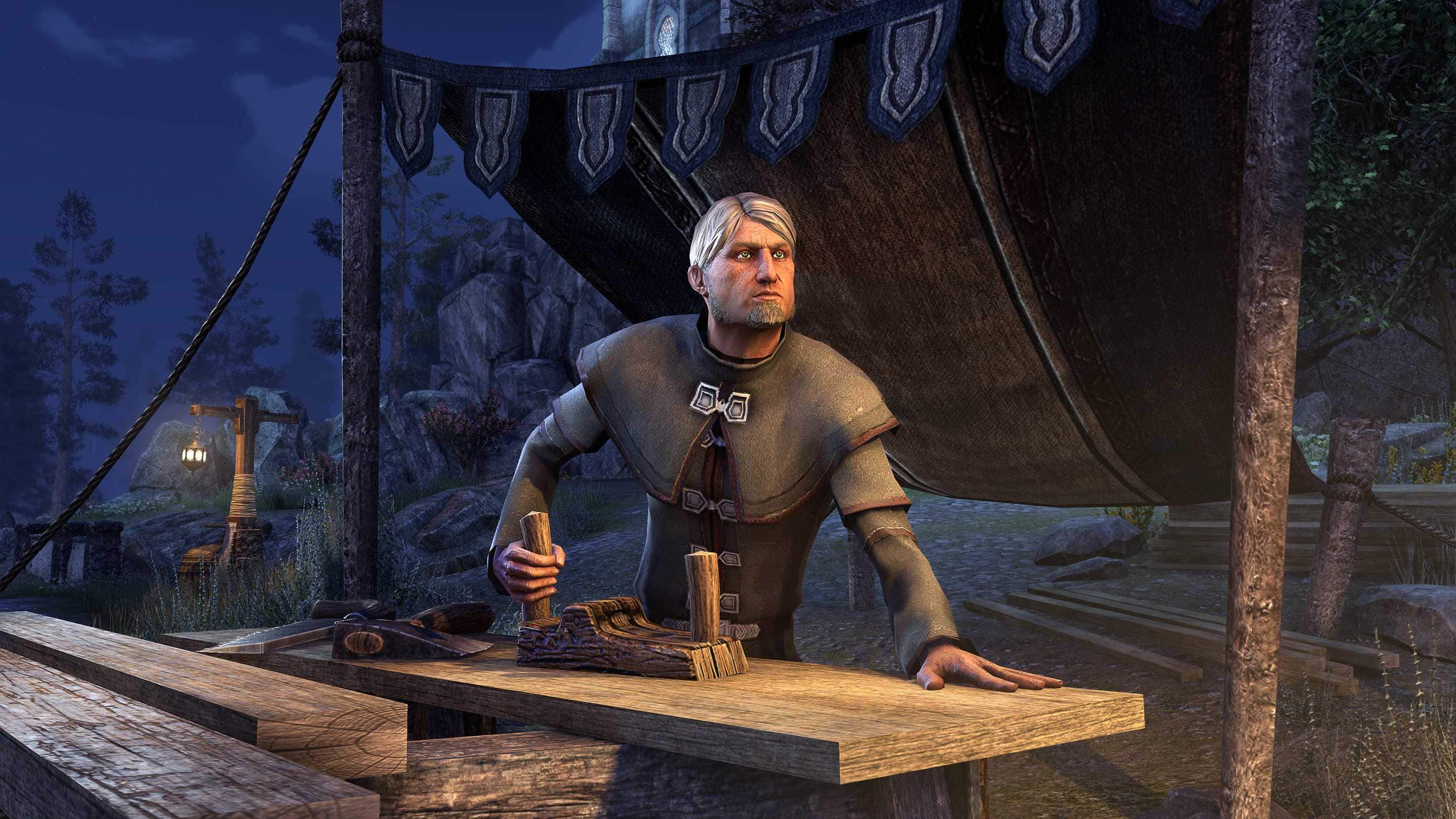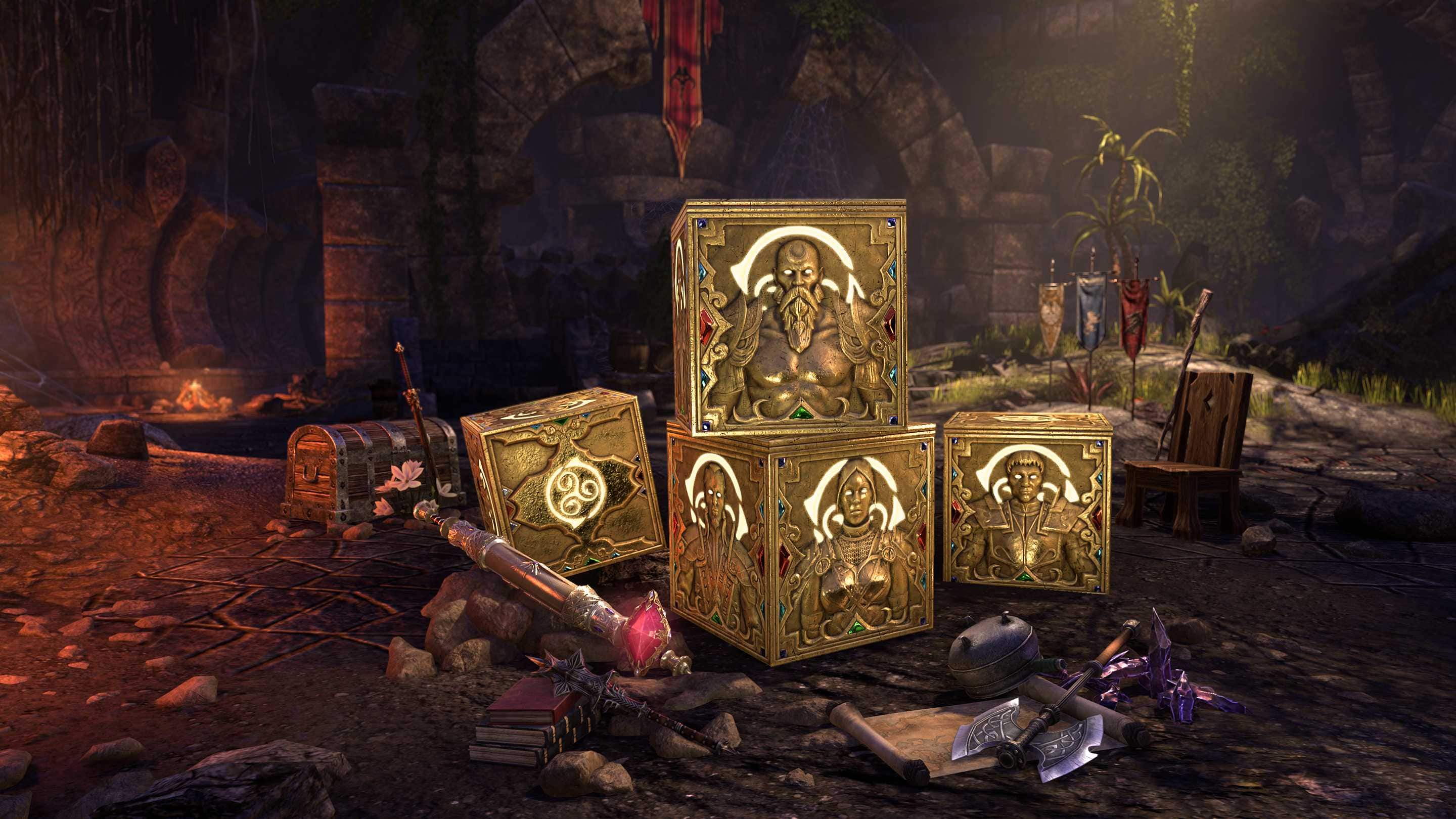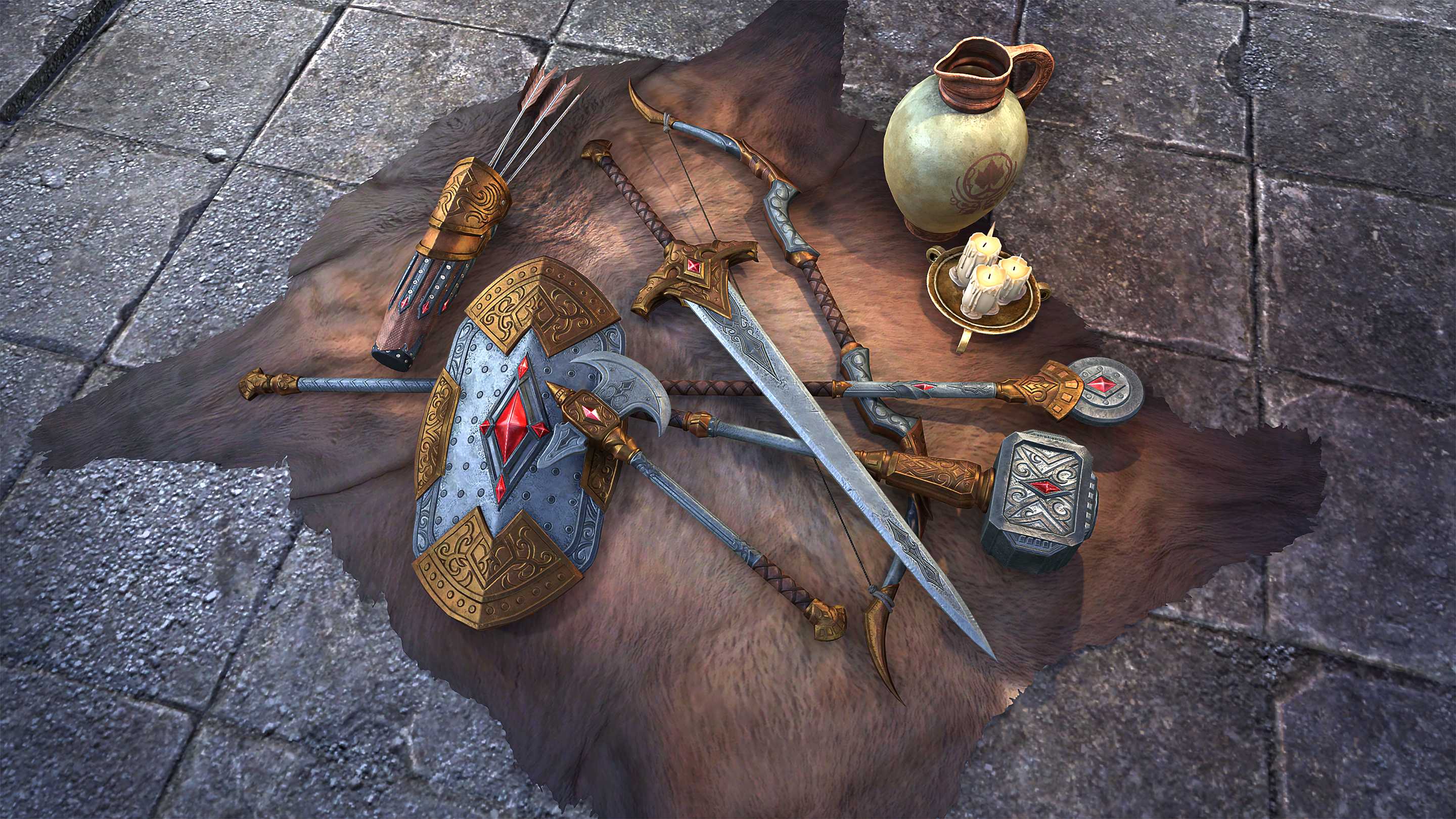
Telenger the Artificer returns with new insights into the foul Sload of Thras.
Our newest addition to the Archive comes from our esteemed patron Telenger the Artificer, who has walked these halls on many occasions. This work, if it is true, gives us new insights into the Sload, the mysterious slug-men of Thras. We hope you will enjoy it!
Next time, we'll present a new book from High Astrologer Caecilus Bursio of the Star-Gazers on the constellations. Send your questions about the stars, their nature, and their power to community@elderscrollsonline.com and we'll pass them along for his consideration.
A Loathsome Civilization
By Telenger the Artificer
A most unexpected curiosity has entered my collection after being appropriated from a defeated Maormeri fleet. Why this text was aboard one of the vessels, I cannot guess, but it appears to be the journal of a diplomat to Thras written before 1E 2260. Though it is damaged, the descriptions of the Sload that remain legible are fascinating—assuming this is not some strange work of fiction or forgery. If it is legitimate, it is a remarkable find, as the Sload were loath to treat with any of the races of Tamriel.
We know that the slug-folk of Thras practiced foul necromancy, but their involvement with that dread art may have been more prominent than previously thought, if this is an authentic text. The author expresses frequent disgust at interacting with re-animated slaves. It seems the Sload also slaughtered and revived various sea creatures—turtles, crabs, and the like—to keep as pets. His repulsion did not end there, though, as he complained about the repugnant smell of the Sload, the several inches of slime-coated water upon the floors of any land-based building, and the various molds and fungi served as food.
There are mentions of elaborate sacrificial rituals, which I find unusual given their general rejection of worship. The Sload certainly entered pacts with the Daedra when it suited them, but the ceremonies described here are not indicative of typical Daedric sacrifice. They may have spent years grooming individuals to participate in re-enactments of the deeds of Sload mythological heroes and villains, with the eventual performance (which may have lasted weeks) culminating in the deaths of every actor by the application of “desiccation crystals" to the body. Ancestor worship? Unnamed deities? Preservation of ancient magics? It is impossible to tell.
More intriguing is a badly-damaged entry that discusses an audience in the submerged tower of an “Elder Distended One." I can make out little of the discussion between the two, but there are mentions of an “impressively corpulent body and strangely pulsating head," and three eyes that emerged upon its belly that each “opened again as a toothless mouth, disgorging [unreadable] that the attendants eagerly consumed." This is the first insight I have encountered into potential cultural leadership among the Sload.
It has caused me no end of frustration that the entries chronicling a visit to the “Menagerie of Sublime Infection" are nearly unreadable. Aside from the name, almost nothing of this section can be deciphered aside from several unnerving words implying all manner of affliction, from “suppurating extrusions" and “blood-rot" to “festering myiasis." Much about the Thrassian Plague remains a mystery—and perhaps one that is best left buried. I cannot, however, deny my interest in the whys and wherefores of the grotesque fascination with disease expressed here.
Now that I have documented my own immediate reactions to this text, I must send it along to colleagues in Alinor to hopefully verify its authenticity. Whether or not there is anything useful to be gained from it, at the very least it may add to our understanding of a terrible enemy to all the races of Tamriel in the unlikely event that such a threat re-emerges. If anything contained herein is factual, let us pray to Auriel that it never does.
Telenger the Artificer answers your questions:
“I have two questions. Firstly, what is the Sloads' relationship like with the Maormer? They seem like the only race that would deal with them frequently. Secondly, do they have any connection to the rise of the Worm Cult on the mainland? Many thanks for your wisdom, and may Mauloch guide your staff and light your way." - Urgazul gro-Brashnuk, Orsinium Historian and Keeper of the Forge-Secrets
Telenger the Artificer says, “Welcome, fellow scholar! As far as we in Summerset can tell—and we have more experience of the Sload than any other folk—the Sload are hostile to all other mortal races. Though there is some evidence of diplomatic traffic between the Sload and the Maormer—see 'A Loathsome Civilization'—there are also plenty of accounts of conflict between the Slugmen and the Sea Elves. This is no surprise, since both Sea Elves and Sload are at war with all other mortal races. The Maormer's grievance seems to be that they got stuck with Pyandonea, a sad and swampy archipelago of malodorous islets; why the Sload are so belligerent to all others is unknown.
“As to your second question: I have heard speculation about an entente between the Sload and the self-styled King of Worms, but facts? Someone in Cyrodiil may know more, but I do not. I suppose the Eyes of the Queen might know something, but if so, they haven't told me. And why would they?"
“Most proficient Artificer, the grim fate of Bendu Olo's lost expedition members has recently come to light in the depths of Coldharbour. Was this Coral Tower encountered by the All-Flags Navy similar in nature to the other Towers of Nirn, or was it simply a Daedric perversion?" – Legoless, Doyen of the United Explorers of Scholarly Pursuits
Telenger the Artificer says, “Since the Coral Tower has fallen, at this point the best we can do is make educated guesses. In their own perverse way, the Sload are very capable sorcerers, and from all accounts the Coral Tower acted as both a focus and a projector of mystical power. I am not a scholar of Tower Lore—my interests tend more toward the practical—but this accords (somewhat) with what the mythohistorians claim is the purpose and practice of the so-called Towers of Nirn. Was the Coral Tower a 'real' Tower like Lawful Crystal, here in Alinor, or was it a failed imitation, like the Doomspire? I do not think we have an answer based on what little we know."
“Oh most high of Artificers, I ask that you impart any knowledge you have (which I don't doubt is extensive) regarding the Sloads' presence in Black Marsh. When was the first report of their appearance there? Could they still be lurking in the swamps to this day? Do the Argonians have any particular relationship with the Sload?" – TheHumanFloyd
Telenger the Artificer says, “The Sload? In Black Marsh? You surprise me, TheHumanFloyd—dare I ask what are your sources for this interesting claim? If true, certain advisors to the Queen on security matters must be notified immediately!"
“In my travels, I've heard about the Pillar of Thras. It is true that the Sload perform sacrifices here? If so, what is their motive? Also, is it true that some of the victims disappear before they touch the ground? What happens to them? On another note, how is Sload Soap made? I've heard rumors of an entire factory in High Rock dedicated to its production by crushing Sload larvae!" – Bertille Montrose, Breton bookseller and amateur scholar
Telenger the Artificer says, “So many questions! You Bretons always seem so frenetic to us, trying to cram so much activity into your brief lives. I suppose it's understandable, however.
“Anyway, to your questions: Pillar of Thras? Are you referring to the fallen Coral Tower that sank at the time of the All-Flags Navy, or some new edifice? If it's a new erection, this 'Pillar' of yours may square with certain rumors I have heard that the Sload intend to rebuild their Tower, and indeed may already have commenced. The Thrassians command powerful magics, of course: not just necromancy and portal spells, but the ability to command the coral they live among in a manner analogous to the Wood Elves' communion with the plants of Valenwood. Could they induce the coral to grow rapidly out of the Sea of Pearls, spiraling skyward so as to create their tower anew? This bears further investigation. Perhaps the Sapiarch of Scrying….
“But enough speculation—on to a subject about which, for once, we can be certain: Sload Soap! There are many misconceptions about the origin of Sload Soap, and I am happy to have an opportunity to clear it up. First, let us consider the metamorphic biology of the Sload. They begin life on the Thrassian Atolls as, in the words of Admiral Bendu Olo, 'disgusting little amorphous grubs.' Ignored by their pendulous parents, these grubs somehow squirm their way to the sea, where they mutate into aquatic quasi-cephalopods known as 'polwygles.' Due to their corpulence, adult Sloads spend a great deal of time in the shallow lagoons of their atolls, wallowing among the polwygles. Those larvae that prove too slow to avoid their parents' pseudopods are caught and harvested, culling out the weak and providing the raw material for Sload Soap.
“Captured polwygles are tossed into an ever-bubbling cauldron where they gradually deliquesce into a slimy broth. This broth undergoes an alchemical commixture with materials known only to the Sload, after which it is poured into molds and allowed to cool. Once solid, the bars are scooped out and wrapped in the viscera of hagfish for preservation.
“It is believed that the Sload use this soap as a primary component in their necromantic rituals. I'm no expert on necromancy, but apparently having an emulsified reagent concocted from one's own descendants acts as profound intensifier in the magic of undeath. Sload Soap is rarely seen away from Thras, and when it is it commands high prices from alchemists, who prize its unique properties for creating potions of agility and, rarest of all, the mutation of personality. Alianora the Red, our Sapiarch of Alchemy, says that Sload Soap has never been thoroughly analyzed outside of Thras, and may contain many more undiscovered alchemical properties. Plus, it's an exceptional cleanser, deep-cleaning yet mild, that leaves your skin feeling youthful and refreshed."
"First thing's first; I want my tome on the Whet Fang back, Telenger. Second, several scholars suggest that the Thrassian Plague was supernatural in nature, the result of bargains with Daedric Princes like Namira the Prince of Rot and Peryite the Prince of Pestilence. Do you personally think there is any credence to these claims, old friend?" – Eis Vuur Warden, Wayward and Contract Scholar
Telenger the Artificer says, “Eis Vuur! Of course, I'll collect that book as soon as I get back to my laboratory and have it sent to you by Black Horse Courier. I'll just need to find another object the right size to, er, prop up my lillandrilic calcinator. (Ahem.)
“The Thrassian Plague, scourge of the First Era, was known to the common people as the Slug Famine because the wriggling gastropods that carried the flesh-eating disease infected not just people, but livestock and wild animals as well. It's easy to see why one might associate the Plague with Namira or Peryite, as the Spirit Daedra's sphere includes slime and slugs, while the Taskmaster's includes disease and contamination. It's well known that the Sload traffic with the Princes, so the involvement of Namira or Peryite is quite credible. However, there is also the Pestilent Progeny Thesis of that reprobate Divayth Fyr, which postulates that the infectious slugs that invaded Tamriel were mutated versions of the Sloads' own infantile larvae. However, since the Plague was wiped out by Syrabane, we have no extant samples to test to determine which of these hypotheses is correct. Indeed, these theories are by no means mutually exclusive, and it could be that the truth lies somewhere in between. Only the Sload know for sure. Perhaps, Eis Vuur, in your wayward and peripatetic travels, you could stop off at Thras and ask them!"










 FREE!
FREE!